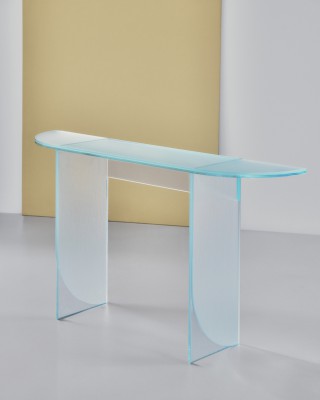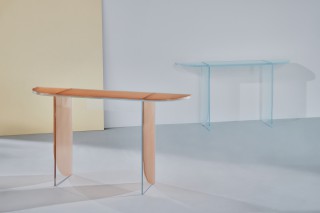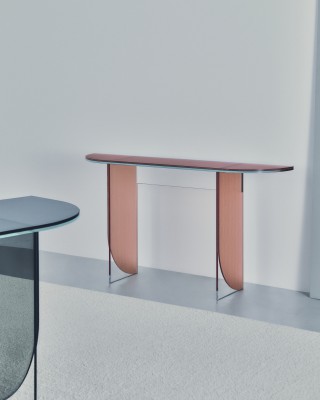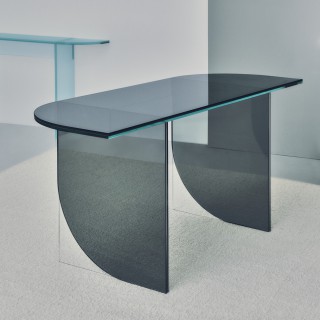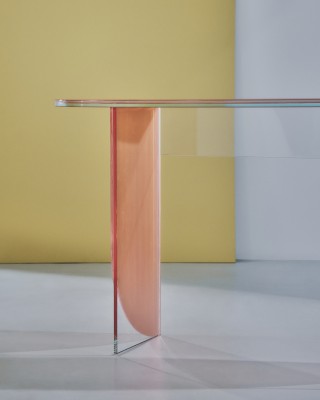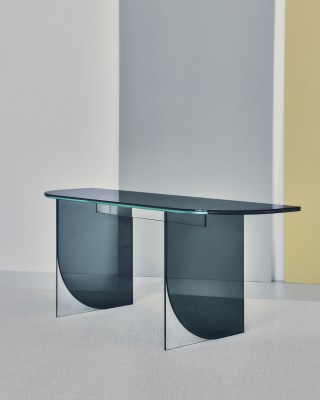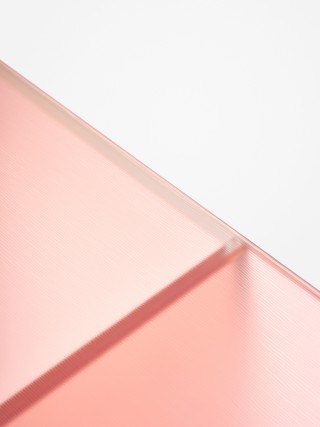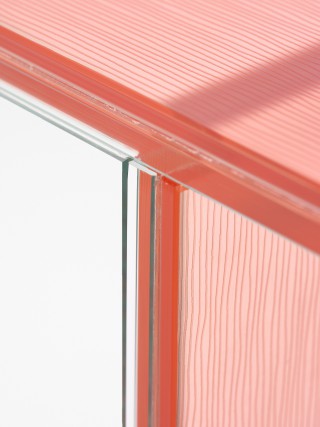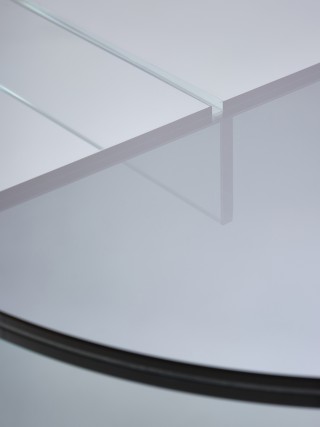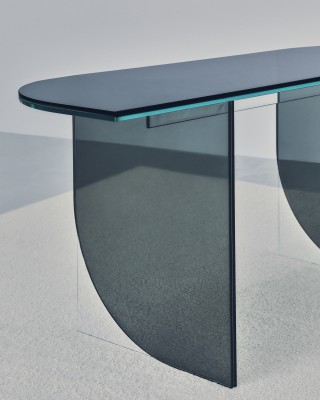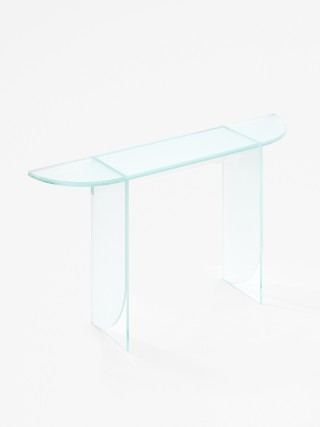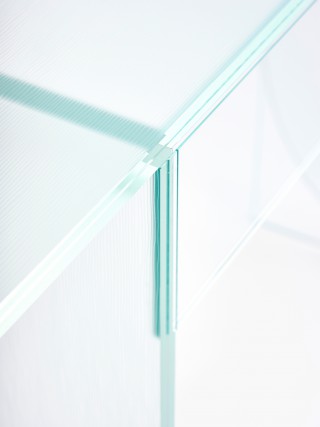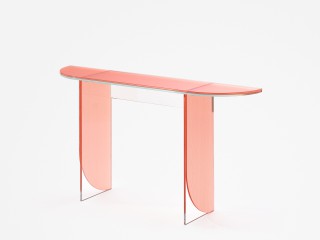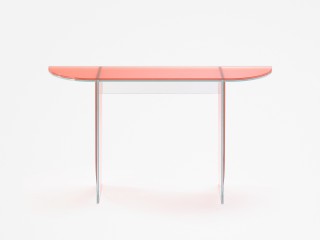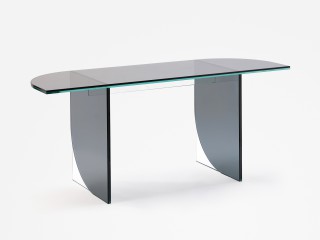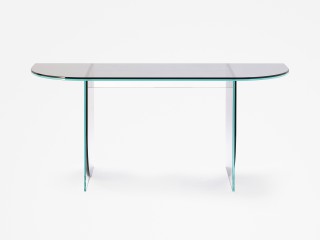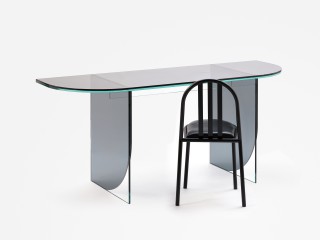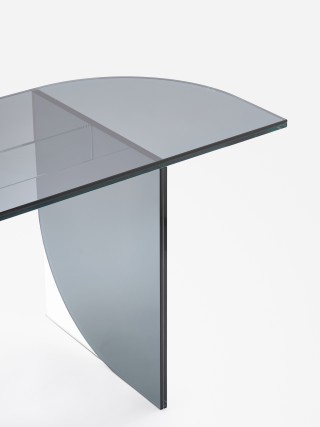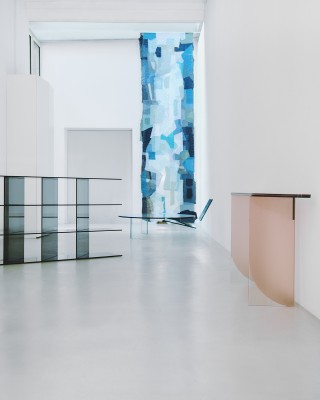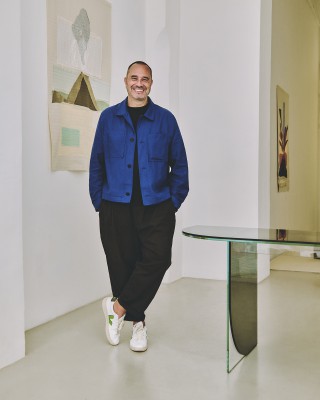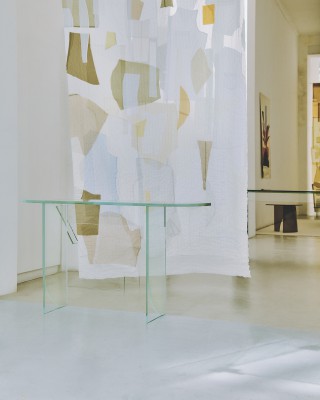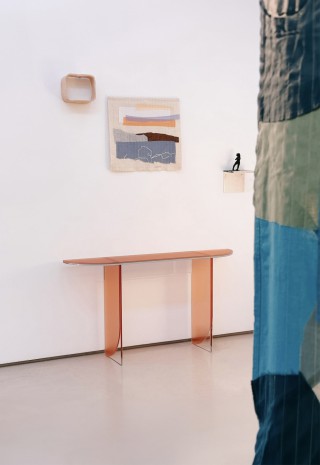ILLUSION
GLASS VARIATIONS
The "Illusion" collection questions the notion of stability and plays with the illusion of instability through highly graphic pieces of furniture made entirely of glass.
The various elements of the collection are defined by simple, essential geometric lines, a combination of rectangles and rounds, or half-rounds and quarter-rounds. The resulting graphic interplay is somewhat reminiscent of the "Bauhaus" of the 1920s, with its essential, minimalist edge.
In each of these pieces, the principle of illusion is based on the use of two layers of glass on the different bases. The first layer is colored or textured, giving it body and presence, while the second layer is clear glass, making it visually virtually nonexistent. It's as if the pieces magically hold together without toppling over, when in fact it's the clear glass layer that gives them stability and prevents them from toppling over. The eye tends to focus on the colored or textured layer of glass, giving the impression that the pieces are resting on the tip of an arch rather than on a flat surface.
The transparency of the glass creates a subtle play within the pieces themselves. Cut lines and colors or textures, depending on the version, cross and intersect, creating unexpected graphic effects. Visual links and tensions are created between the lines and the colored surfaces. The beauty of glass is sublimated. It remains light and airy but has a real personality. This personality is more pronounced when gray or bronze tinted glass is used, or lighter when pastel or opaline colors emphasize the graphic shapes of the feet.
All the pieces in the collection, whether tables, small desks or consoles, are available with different finishes for the graphic parts: in clear glass colored in the mass or by hot lamination; or in frosted glass with a milky or colored texture. These are all exceptional pieces that require great expertise to bring them to life.
